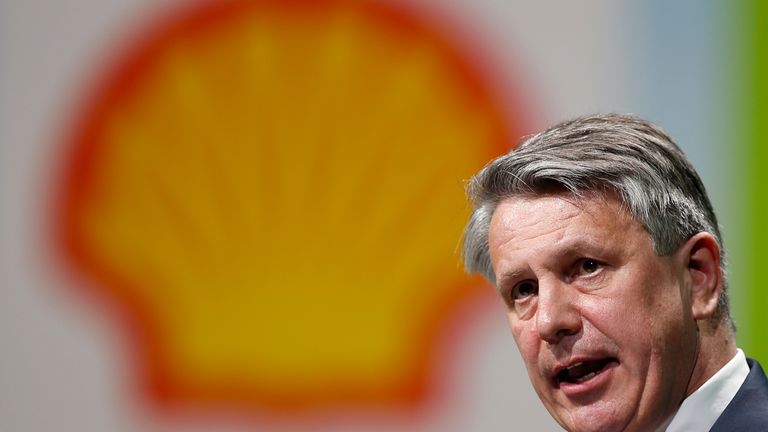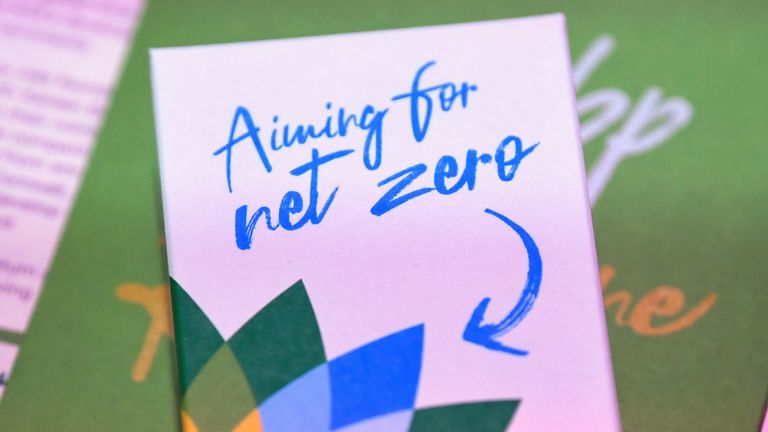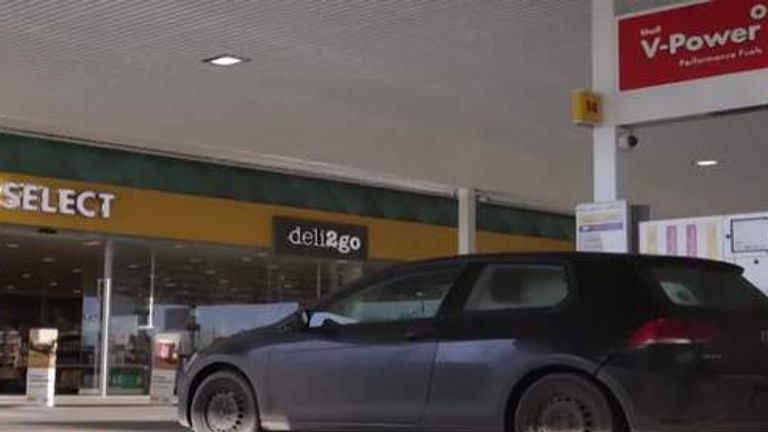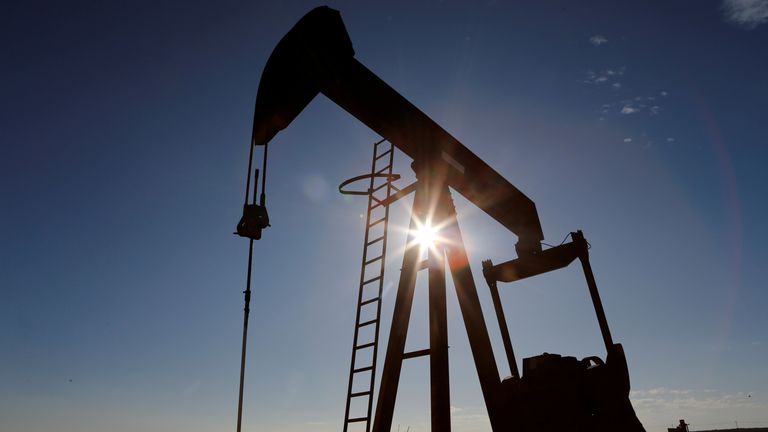It is now 10 months since Royal Dutch Shell, one of the world's biggest oil and gas producers, set a target to become net zero carbon by 2050.
Today, the company set out how it intends to achieve that target.
The challenge is more complicated than it looks.
The world's population is likely to grow by four billion by the end of the century and so it is not as simple, for Shell and its peers, as simply pivoting away from hydrocarbons.
They must also think how they will be able to meet higher demand for energy in coming decades.
Ben van Beurden, the chief executive, also identified another challenge today.
That electricity also needs to be affordable in order to address global challenges such as poverty and inequality.
He said the company was setting a target to supply reliable electricity to 100 million consumers in emerging markets who do not have it today by 2030.
Underpinning Shell's announcement is the assumption that power consumption will increasingly shift to electricity and that electricity generation will chiefly have to be driven by renewables with an element of nuclear.
Mr van Beurden said that, while 30 years was a long way into the future, he already had an idea what Shell would look like by then.
He told shareholders: "By 2050, I would envision all our cash flows coming from serving customers with net-zero energy solutions and sustainable materials.
"Our energy product mix would be dominated by low and no-carbon energy such as renewable power, biofuels and hydrogen: a product mix that we would develop in partnership with sectors that use the energy, from biofuels in aviation, hydrogen for heavy duty transport, renewable power for homes and businesses.
"Now, some of the products we sell might still contain carbon.
"But the majority of our energy sources would come from renewable resources.
"And all the fossil-based carbon that we sell would either be captured and stores, balanced out through nature, or embedded in materials.
"I can imagine us capturing and storing maybe 50 million tonnes a year of carbon dioxide."
Shell is not alone in setting itself this target.
BP also set out plans last year to go net-zero by 2050 too.
There are at least two big questions for investors, the owners of the business, here.
The first - in which both BP and Shell have struggled to convince their investors - is whether they can remain as profitable, as net zero businesses, as they have as fossil-fuel producers.
Renewables typically aim for a return on capital invested of around 10% whereas oil and gas companies typically seek to achieve a return of around 15%.
The second is which strategy, of those set out by Shell, BP, Total and others, makes most sense and is most achievable.
In answering that first question, Jessica Uhl, Shell's chief financial officer, made several points.
She argued that, from a risk perspective, Shell may not see the volatile swings in profitability in future that it has in the past.
Ms Uhl said that, while Shell had traditionally focused on securing and developing assets - a business model linking it to commodity prices and project-based returns - this would not be the case in future,
"Our cash flows will become less exposed to oil and gas prices," she added.
"They will have a stronger link to broader economic growth."
Ms Uhl also pointed to Shell's track record in generating more cash than any of its peers in a range of conditions during the last three years.
The comparison with BP in particular is also becoming easier to understand than it was this time last year.
Last year, there was a perception that BP was more ambitious with its net zero targets, because it promised to reduce carbon emissions in absolute terms.
Shell, by contrast, focused on intensity - the volume of greenhouse gases emitted per unit of energy.
This meant that, in theory, emissions could still rise in volume terms, even as intensity was falling, if an energy company raised its production.
That distinction no longer applies.
Mr van Beurden said today: "Just to be clear, achieving net zero on carbon intensity is exactly the same as achieving net zero on absolute emissions."
One notable difference with BP is the greater extent to which Mr van Beurden talked about Shell's customers today.
With a growing global population, energy efficiency must improve and the biggest consumers of energy, chiefly industry, will have to change their consumption.
Shell sees itself as partnering its customers in that process in the transition.
Its presentation to investors, interestingly, also included contributions from two customers: the aircraft engine maker Rolls-Royce talked of the need to develop more supplies of sustainable aviation fuel (SAF) to support long-haul air travel while MSC, the container shipping giant, talked about the use of biofuels as a solution for decarbonising its fleet.
To that end, Shell is restructuring its marketing operations so teams will face individual sectors, with those teams given individual 'carbon budgets' to incentivise them to find ways of replacing high-carbon income with no or low-carbon sources of income.
That transition will also include individual consumers, as highlighted by Shell's ambition to double its electricity sales by 2030 and to increase its network of electric vehicle chargers to 500,000 by 2025, aiming to take the number of customers it serves daily on its forecourts from 30 million today to 45 million by 2025.
This gets to the heart of the different approach from BP.
The latter aims to generate more renewable energy.
Shell is putting a greater priority on selling clean energy to consumers but sees no need necessarily to generate it.
Other differences include the extent to which Shell is targeting positions in fuels such as hydrogen and the way it plans greater investment in carbon capture and storage.
But the drop in oil production it is planning - 18% lower by 2030 - is not as much as the 40% drop in production BP plans in the same period.
It is why some critics say Shell is still not going fast enough.
The company is not planning to invest as much in renewables as, say, BP.
And, while 25% of its spending will be going on renewables, that means 75% will not.
Yet there is probably no way around that because Shell needs the cash flows from its traditional hydrocarbon activities to finance its investments in these new areas, as well as continuing to pay dividends to the suppliers of capital, its shareholders.
This is important to the wider economy: before its dividend cut last year, Shell accounted for almost £1 in every £6 of the pay-outs from FTSE-100 companies.
Moreover, for some environmental campaigners, nothing short of immediate cuts to oil and gas production will do.
Greenpeace UK today accused Shell of "brazenly" seeking to avoid oil production cuts.
At the other end of the spectrum, some investors will shun shares in European oil and gas companies such as BP, Shell and Total, in favour of US supermajors Exxon and Chevron, who are by comparison half-hearted about the energy transition.
It is also worth noting - something Shell is always keen to point out - that, while its targets cover its entire business, BP's do not include its 20% shareholding in Rosneft, the Russian state-controlled oil and gas giant, a major source of BP's cash flows.
Shell's net zero target also covers the emissions from the use of all products it sells to its customers - not just the ones it makes itself.
On this journey, as well as taking consumers with it, Shell will also need to bring its shareholders.
The company believes its oil production peaked in 2019 and Mr van Beurden said today he expected no new "frontier exploration" after 2025.
It will be interesting to see whether shareholders will be prepared to live with that if the oil price rockets in future because, by leaving oil in the ground that it would otherwise have extracted, Shell will be foregoing profits that may have been there for the taking.










